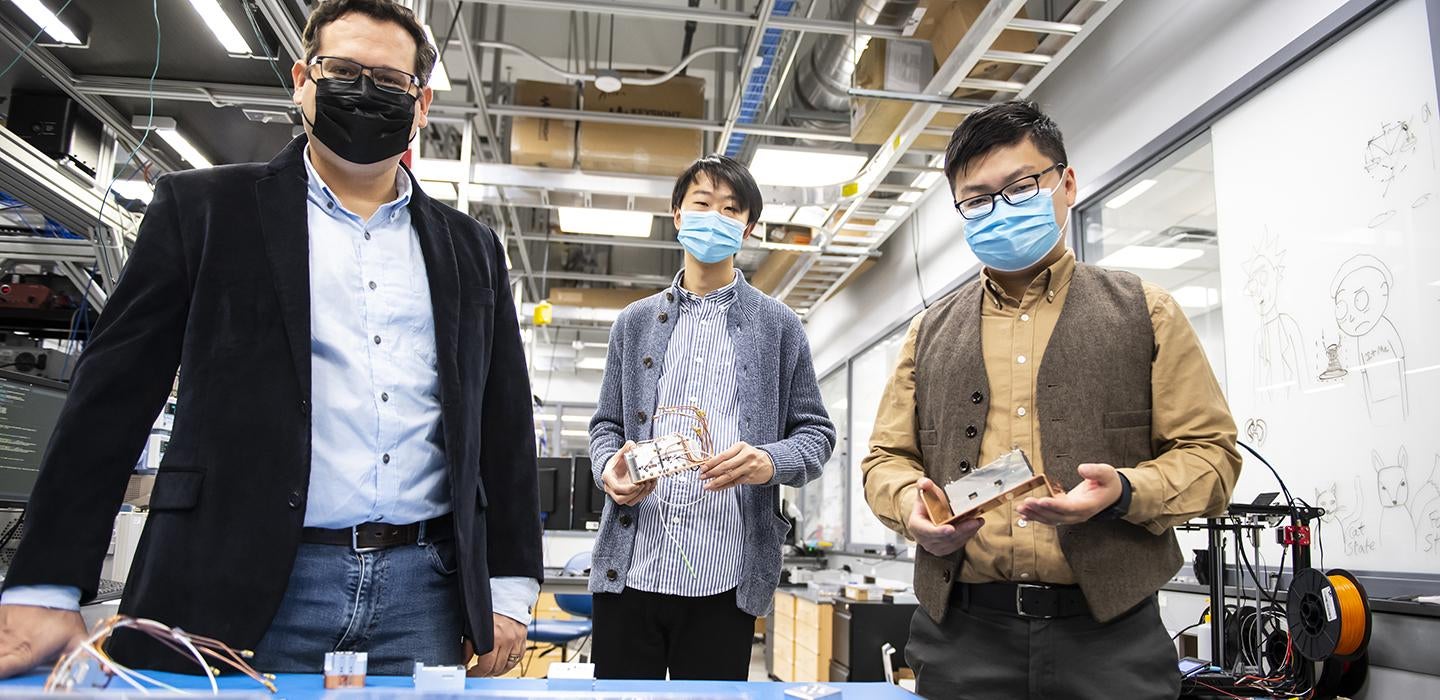
Subscribe to Pittwire Today
Get the most interesting and important stories from the University of Pittsburgh.One day, quantum computers may overtake our current technology, harnessing the strange properties of quantum mechanics to crack codes and solve problems that are impossible for modern computers to tackle.
It’s a distant dream, but one that Pitt researchers are helping to bring closer to reality with a quantum computer that uses Lego-like components hooked together in a unique shape that’s more efficient than others that exist today.
“Instead of looking like an infinite checkerboard of qubits connected to their nearest neighbor, [the computer’s structure] looks very much like a tree, or the structure of an internet or phone system,” said Department of Physics and Astronomy Assistant Professor Michael Hatridge in the Kenneth P. Dietrich School of Arts and Sciences.
The researchers published an article describing their research ahead of peer review in the preprint repository arXiv. The team includes faculty members Roger Mong and David Pekker as well as graduate students Chao Zhou and Pinlei Lu, all in the Department of Physics and Astronomy.
In superconducting quantum computers, “qubits” take the place of bits in modern computers, with bigger numbers of qubits enabling faster problem-solving. The world’s most powerful quantum computers have more than 100 qubits; the computer at Pitt consists of seven.
The group’s main innovation, however, is their now-patented method for connecting qubits together. It’s both more efficient and more practical than other superconducting quantum computers: Efficient because researchers can run a wider variety of algorithms, getting more computational bang for their qubit buck, and practical because they can replace individual qubits that fail. Even in the world’s largest and most complex quantum computers built elsewhere, researchers simply work around dead qubits or start over with a whole new system from scratch.
They have a long way to go before they’re competing with the big guns of the quantum computing world, however. The team had to borrow electronics just to run seven qubits, and they’re still in the early stages of improving how their qubits are connected and how long they last.
“We’ve been redoing all of this in the last year to bring us to the next level of performance,” Hatridge said. “When I was in grad school, our repetition rate was around a second — now we take billions of experiments a day. We’re generating terabytes of data.”
Right now, the team’s qubits can do calculations for a few millionths of a second, a number referred to as “coherence” that the team is trying to push up. One day, Pekker said, they hope to have a computer that theorists like him could actually use to solve problems that our current silicon-based computers can’t touch.
For researchers dealing in the abstract, heady world of quantum computing, the team’s actual methods are surprisingly down-to-earth. The machines themselves are custom-milled metal, and the grad students found that the most effective way to bind the various Lego-like blocks of the modular computer together wasn’t with some exotic substance. Instead, they just polish the metal to a smooth shine.
“We talk quantum on a good day,” said Hatridge. “Sometimes we go to David and Roger, who are much better quantum mechanics, and we ask, ‘Did I make this Hamiltonian wrong?’ But then I also teach my grad students how to make a cheese cutter to cut Styrofoam.”
Getting to this point has taken six years of trial-and-error and tinkering. Hatridge’s lab is littered with once-useful past quantum computer components — and even the full carcasses of quantum computer 1.0 and 2.0 (the current iteration is version 2.1).
The next step for the team is to combine the results of several of their experiments, fusing the higher coherence of other qubits they’ve created with the efficiency of their tree-like design.
“If we can get it all together, then it’ll really be world class,” Hatridge said.
— Patrick Monahan


